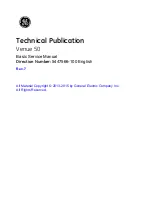
Pulse oximeter MySign
®
S
3.2 General functional principles and conditions
The technology of non-invasive pulse oximetry is based on two principles. On one hand, the color of the blood
influenced by oxygen saturation is determined at the two wavelength ranges of red and infra-red
(spectrophotometry). On the other hand, the quantity of arterial blood in tissue (and therefore also the light
absorption of this blood) varies during the pulsation caused by the ejection of blood from the heart into the arteries
(plethysmography).
The color difference caused by the blood saturation can be attributed to the optical properties of the hemoglobin
molecule, or more precisely, to the organic hem component. The hemoglobin is responsible for transporting
oxygen in the blood via oxygenation (O2Hb).
The oxygen can be released again; i.e. the blood is deoxygenated (oxygen saturation decreases), losing its red
color accordingly. As a result, the absorption of red light is more heavily influenced, and the absorption of infra-
red light is less influenced. The pulsation of the arterial blood flow, which changes the blood volume during the
systole and diastole and thereby alters the light absorption, is used for determination of the arterial oxygen
saturation.
Because only the change in light absorption is evaluated, non-pulsing but absorbing substances such as tissue,
bone and venous blood have no effect on the measurement. One red and one infra-red diode serve as light
sources for the measurement. The receiver is a photodiode.
The pulse oximeter measures the ratio of the red and infra-red pulsating absorption, which correlates directly with
oxygen saturation, and displays the oxygen saturation on this basis. In addition, the time intervals between
pulsations are converted into a pulse rate and also displayed.
3.3 Signal quality, pulsation index, disruptions
The pulse oximeter requires a measurable pulse wave in order to correctly determine oxygen saturation values
and pulse rate values. If no or only a very weak pulse wave is detected, incorrect values may be obtained.
The values can also be incorrect if significant movement artifacts occur. The displayed measurement values only
lie within the defined precision range if the bar graph (signal quality indicator) is shown in blue.
Signal quality:
Blue
= Good
Yellow = Moderate
Orange = Poor
The sensor’s reading will only be accurate if it is correctly positioned. If attached incorrectly, the sensor’s light
signal will not be aimed straight at the tissue, which can affect the SpO2 reading.
Pulsation Index (PI): PI is a measure of the level of blood pulsation in the tissue and is defined as the quotient of
the pulsatile (I
AC
) and non-pulsatile (I
DC
) components of the infra-red light. PI values below 1 can result in
measurement errors.
Utility of PI:
Adequate blood flow (pulsation) at the application site is required for a correct measurement. The
pulsation index (PI) is a general indicator of the pulsation strength obtained at the measurement site, and provides
an additional means of signal quality assessment.
Testing of PI:
The pulsation index has been evaluated by testing the MySign
®
S monitor and sensors with a listed
pulse oximeter simulator at pulse modulation levels ranging from 0.2% to 20%.
The pulsation may be negatively influenced by, for example, the use of blood pressure cuffs, arterial
catheters, arterial occlusion or overly tight application of the sensor. Venous pulsation or defibrillation
can also affect the measurement result.
10
066-07-1002197_GA_MySignS_FDA / 06.14











































